#Eco-friendly pallets
Explore tagged Tumblr posts
Text
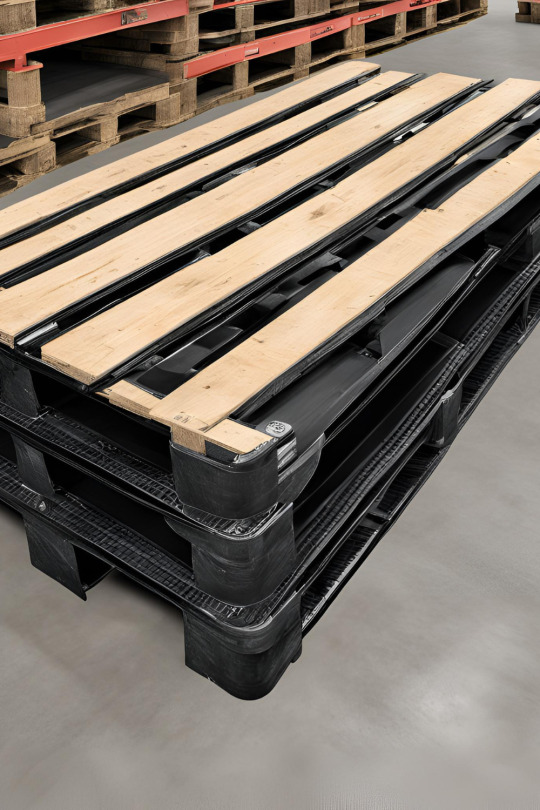
Discover the benefits of Nilkamal Bubbleguaed's returnable pallets. Our eco-friendly and durable pallets offer cost-effective packaging and transportation solutions. Reduce waste and optimize your supply chain.
#returnable pallet#Nilkamal Bubbleguaed#sustainable packaging#pallet rental#packaging solutions#transport solutions#eco-friendly pallets#reusable pallets#supply chain optimization#cost-effective packaging
0 notes
Text
Returnable Pallets for Efficient Logistics | Nilkamal Bubbleguard
#Returnable Pallets#Reusable Pallets#Sustainable Packaging#Supply Chain Optimization#Logistics#Nilkamal Bubbleguard#Pallet Solutions#Eco-friendly Pallets#Cost-effective Packaging
0 notes
Text
Corrugated Wooden, Paper Pallets Manufacturers & Exporter
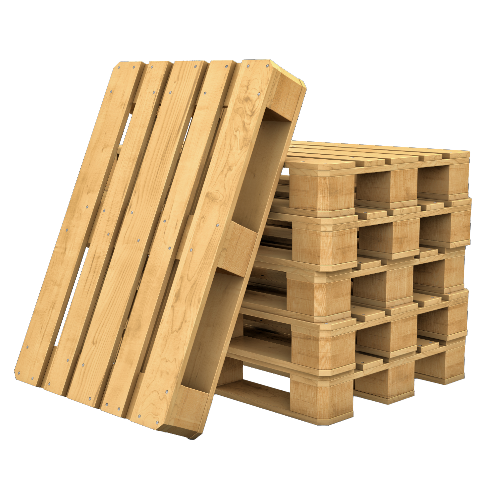
0 notes
Text
Large Pallet Covers Designed for Maximum Load Protection
Reusa Wraps offers sustainable solutions with eco-friendly pallet wrap. Our insulated pallet cover provides superior protection, while large pallet covers ensure your products remain safe during transport. Choose Reusa Wraps for reliable, eco-conscious packaging solutions that preserve both your goods and the environment. For more info contact us.
Phone No: 847-767-7747
#buy pallet wrap#custom pallet wrap#eco friendly pallet wrap#insulated pallet cover#large pallet covers#pallet cover film#pallet shrink wrap covers#pallet wraps#plastic pallet covers
0 notes
Text
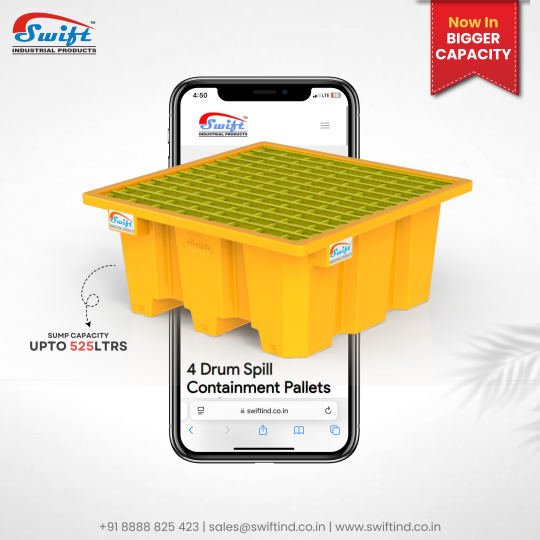
Swift introduces its new 4 Drum Spill Containment Pallet for Maximum hazardous Spill Prevention! Engineered to protect your workspace and the environment. . Swift Technoplast Private Limited www.swiftind.co.in +91 88888 25423 [email protected]
#swift technoplast#spill containment#Spill Pallets#Workplace Safety#Sustainability#Eco friendly#Plastic pallet#plastic pallets#plastic industry#plastic manufacturer#Drum Spill Containment Pallets#Drum Spill Pallets
0 notes
Text
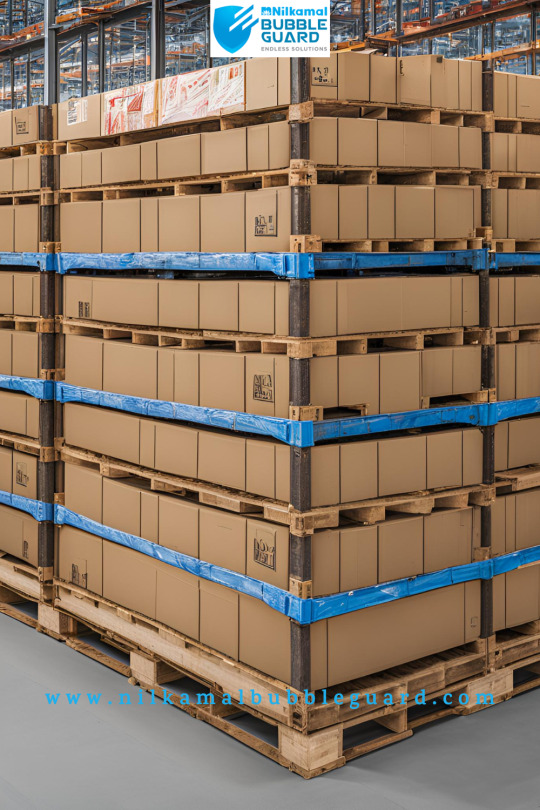
Discover the benefits of Returnable Pallets by Nilkamal Bubbleguard. Reduce waste, improve efficiency, and enhance your supply chain with our durable and reusable solutions.
#Returnable Pallets#Reusable Pallets#Packaging Solutions#Supply Chain Optimization#Nilkamal Bubbleguard#Sustainable Packaging#Eco-Friendly Logistics#Industrial Packaging
0 notes
Text
Post Pallets Manufacturing Efficient Storage Solutions | Stakall
Get durable post-pallet manufacturing to organize your storage. For logistics and warehouses, our pallets provide space-saving options. Get in touch with us now.
#Post Pallets Manufacturing#Pallets Production#Supply Chain Solutions#Eco Friendly Pallets#Sustainable Design#Industrial Manufacturing
0 notes
Text
Maximum Protection to Your Product With Honeycomb Packaging
Hexsa is one of Chennai's leading producers of honeycomb packaging manufacturers, which is one of the most well-liked solutions for environmentally friendly packaging materials. Read More>>

#How is honeycomb packaging made#What is honeycomb packaging#Is honeycomb packaging eco-friendly#What is the price of honeycomb pallet#Chennai
0 notes
Text
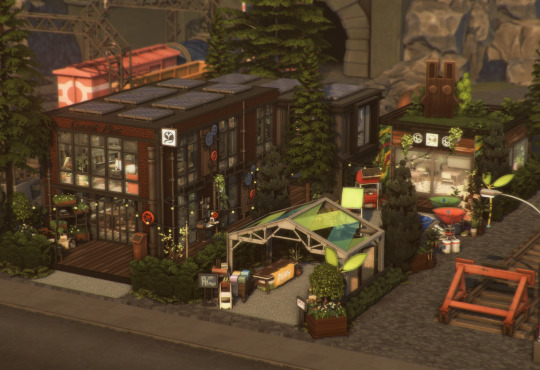
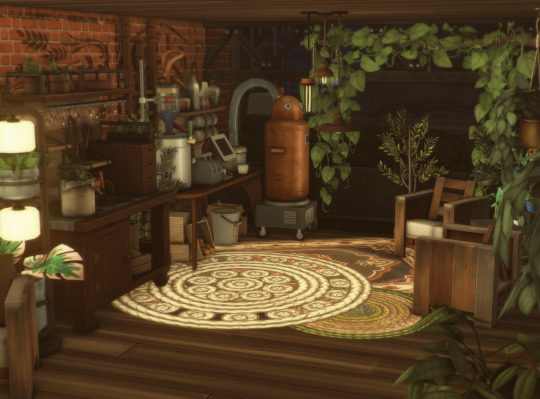
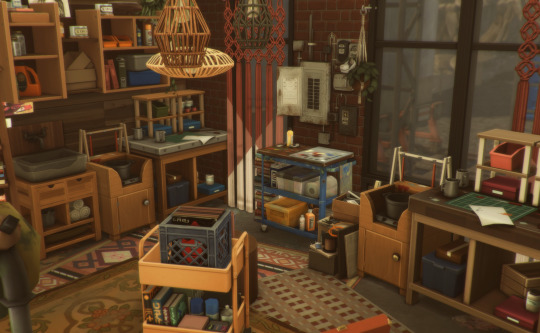
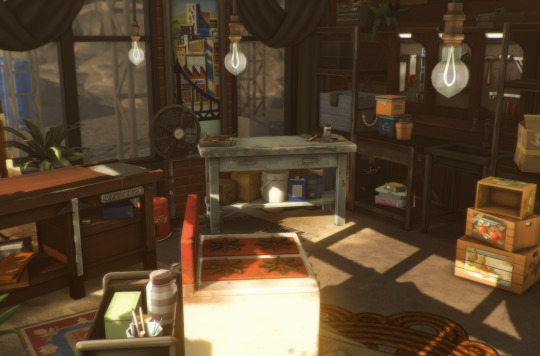
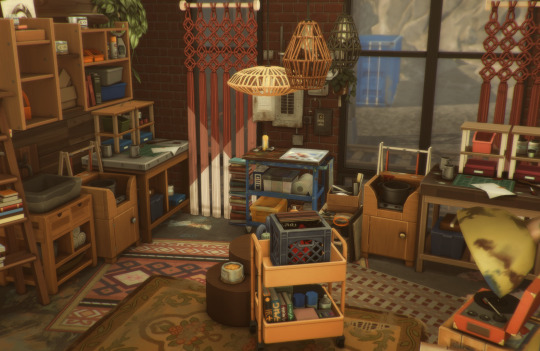
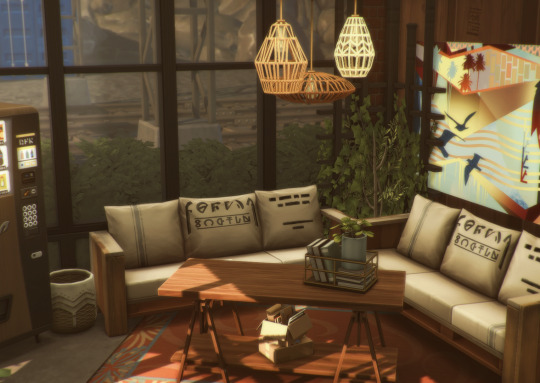
Green Workshop
Лот построен в рамках пака "малый бизнес от SimsLab
"Green Workshop" is an industrial platform for eco-friendly creativity, where old things get a new life. In our workshops you can create furniture from recycled wood, make aroma candles from natural wax, grow plants and turn recyclable materials into art objects. We hold workshops on conscious consumption and lectures on creativity. The space itself is an example of an eco-friendly approach: solar panels, a rainwater collection system and furniture made from pallets --------------------------------------------- "Зелёный цех" — это индустриальная площадка для экологичного творчества, где старые вещи обретают новую жизнь. В наших мастерских вы сможете создавать мебель из переработанной древесины, делать аромасвечи из натурального воска, выращивать растения и превращать вторсырьё в арт-объекты. Мы проводим воркшопы по осознанному потреблению и лекции о творчестве. Само пространство — пример экологичного подхода: солнечные панели, система сбора дождевой воды и мебель из паллет
-cc free - Evergreen Harbor -30x20 -Lot type: small business -Dont forget bb.moveobjects on :)
Download
@s4realtor @publicvanillabuilds @sssvitlanz thank u!
#ts4#ts4 build#ts4 building#cubzikbuilds#ts4 screenshots#ts4 download#ts4 lot#симс 4 скриншоты#симс 4 строительство#симс 4#ts4 house#ts4 community lot#ts4 businesses & hobbies
251 notes
·
View notes
Text
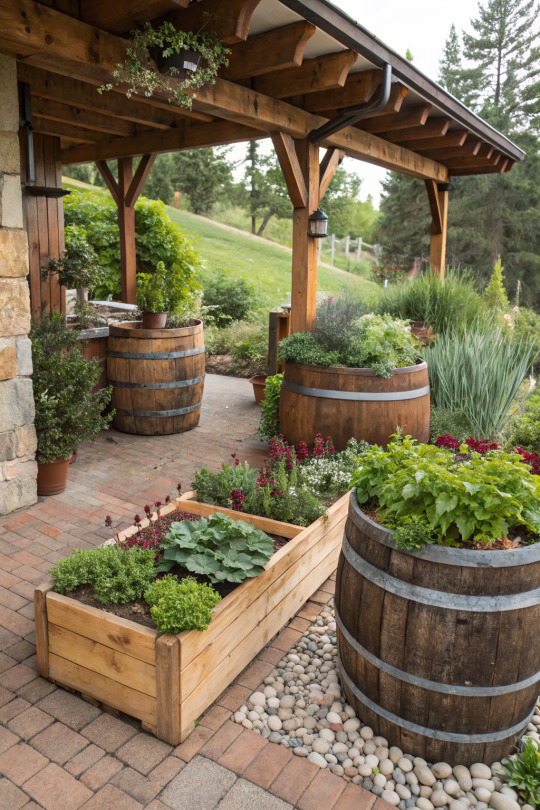
Eco-Friendly Garden Decor Ideas for a Greener Yard
Make your outdoor space beautiful and sustainable—eco-friendly garden decor supports wildlife and reduces waste! Embrace green practices without sacrificing style.
Recycled Materials: Craft raised beds from reclaimed wood or pallets for a rustic touch.
Native Plant Displays: Use planters filled with local species to attract pollinators and conserve water.
Rainwater Solutions: Install decorative barrels or rain chains to harvest water for watering plants. These green garden decor strategies help the planet while creating a serene and stylish outdoor retreat. 🌱 Save & share this pin to inspire eco-conscious gardening!
15 notes
·
View notes
Note
Hello! You said you're writing on gardening. I'm trying to get into food gardening this spring and a few things I'm trying to figure out are
What are good high yield food plants?
Container gardening - I am eternally renting :(
Lower light foods - we can't all have full sun and as a result, we can't all have a lot of popular foods
Apartment gardening?
What grows well in small spaces?
Is plastic okay to grow food in? Does it leech?
Are heat treated pallets okay to grow food in?
What soil is safe? Or how to get soil Safe for growing ? The cheapest is often sketchy. I know fruiting plants are best on what plants dont end up pulling heavy metals into the food and root vegetables are the worst with leafy greens being in the middle, but beyond that?
What are some cheap or Eco Friendly fertilizers?
What requires the least energy/work? I've got chronic fatigue and growing food is known for being hard work. I know raised beds or containers are great, but beyond that, what foods are low maintenance?
I can't wait to read it! 💚
Good points will try to add and address all of them over time. Allready have around half of them written down in there.
7 notes
·
View notes
Text
Discover Nilkamal Bubble Guard's innovative returnable packaging solutions. Our sustainable containers offer cost-effective and environmentally friendly options for businesses. Learn more about our range of returnable pallets, crates, and other packaging solutions.
#returnable containers#sustainable packaging#Nilkamal Bubble Guard#reusable packaging#eco-friendly packaging#packaging solutions#B2B packaging#industrial packaging#returnable pallets#returnable crates
0 notes
Text
Before I get any further into the 1900's, let's take a quick moment to reflect back.
For anyone just joining us, I am currently playing through a cc free (ish) decades challenge. I'll post expanding on what the (ish) means at some point, but I'm doing this for a number of reasons, the big one is I want to know if you can do it. Can you dupe the vibes well enough to feel emersed during each decade? I've got all the packs. This is easily a thousand-dollar game I now have. Yes, I am ashamed saying that. But, with all this money spent, I should be able to make this work.
With the 1890 decade complete, I wanted to share how I dressed or wished I had dressed my sims during this decade. Posts like this, shout out to out to Ashubii, really helped me along the way- so I want to return the favor to the community.
To start: -I am using zero CC clothing, hair, accessories etc. -I do have some "body" cc (lashes, skin overlay, body blush) -I am not a CAS simmer, so I'm not revolutionary in my styling -Between the limitations of what is available in game and my basic knowledge of the decade, don't expect accuracy just inspiration -If you want to know what pack an item is from, please ask! I am very WCIF friendly
I think it's also a good callout that I played the 1890s very 'country' focused. The 1900s outfits I have planned, I think, could easily work for 1890s if you were starting in more of a 'city' so come back for that post if you need fancier inspiration!
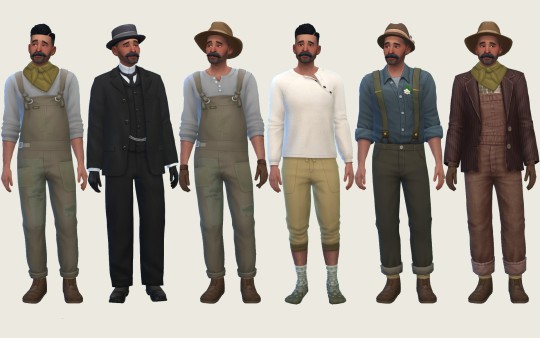
Here we have our main man, Bobert Pancakes showing off his everyday, formal, athletic, sleep, party, and cold weather outfits. He was a farmer, so his outfits were simple, and repetitive. His swim wear was his sleepwear, minus the socks, and his hot weather was his athletic wear plus the bandana from his every day- so I just saved a little room and left those off.
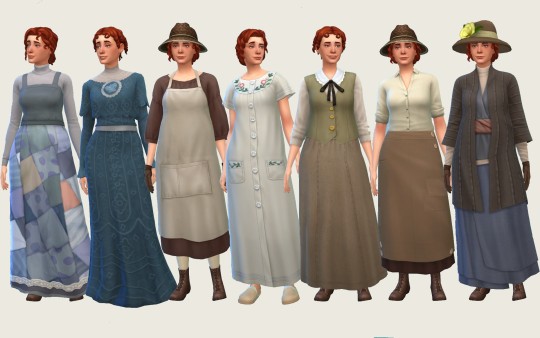
Here's Eliza 'I don't have a favorite child' Pancakes rocking an extra outfit because you know she has to be showing off. I have her everyday, formal, athletic, sleep, party, hot weather, cold weather outfits. Eliza is pretty country, maybe a little more than she would have liked. So, her outfits are also simple, repetitive, but with an extra bow. Her swimwear was a dress from Eco Lifestyle- but she never swam so I'm leaving it out, though you can see mouse nose Nora wear it in some gameplay screenshots.
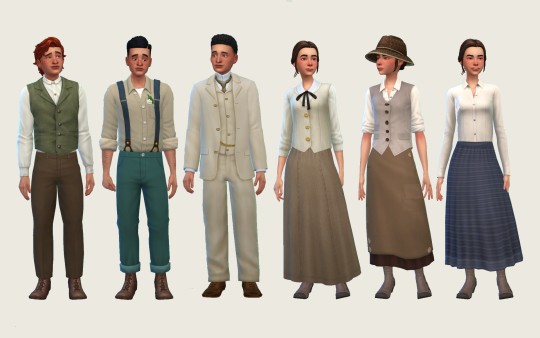
Speaking of Nora! I grabbed her to show off some teen outfits. Though, these are more outfits I wished I dressed her and Hazel in. I also grabbed Arthur, Herbert, and Walter to show off their actual outfits. I've got, for the boys, an everyday for Walter and Arthur and party for Herbert. Nora is styling everyday, hot weather, and party. I dressed the teens, mostly, like adults because teenagers weren't really a thing in 1890, so I imagine they are wearing a lot of hand-me-downs. What I like about the outfits above is that they blend in the 1890s with newer fashion I will be including in the 1900s, I wish I did more of that sooner. I imagined those pieces were the few new items Eliza made for them.

So! Here we have Thomas rocking everyday, formal, party, hot weather, and cold weather. Hazel is wearing everyday, sleep, and formal. Children are tough to dress. Or, rather, dressing Hazel and the gals in this age group was painful. Some of her outfits are so bad, I won't share them. If you wanted to get a little CC in your life, this would be a spot I'd consider adding to. I was feeling so limited because all the skirts are short or very themed to Island Living. Swatches also were very modern, so there just felt like a million restrictions. You can see in the rest of the outfits, I have a preferred color pallet, so Hazel stands out (to me) like a sore thumb in comparison.

I'm grouping infants and toddlers together and, for the first time, showing off Aunt Sylvia and Uncle Harold's children. This is where my lack of interest in CAS really stands out. I do actually think this age group has good options but... I don't careeeeee. Again, I'm not a CAS simmer and this is where it shows. Generally, my toddlers and infants aren't going to events or honestly even leave the house. They are also this ae for only a few days. So, I repeated these looks for almost every little one. This is also probably why I couldn't tell the Pancakes' kids apart until they hit childhood/teens.
I hope this was as fun to skim over as it was to compile! Again, super open to questions or honestly suggestions. I'm having so much fun with this challenge I'm already thinking about doing it again, so I'd love ideas for the next round!
#ts4 historical#ts4#ts4 decades challenge#pancakes decades challenge#decades challege#pdc gen 1#ccfree#cc free decades challenge#the sims 4#sims 4 decades challenge#cc free decades cas inspiration#pancakesdecadeschallenge
23 notes
·
View notes
Text
The operators of an eco-friendly cargo ship hope to save two trucks worth of carbon in each journey to France from Sussex.
The tall ship venture offers to transport produce up to three times a week from Newhaven to Le Treport, Normandy, on low-carbon sailboats.
The English and French crews say they will use engine power to safely navigate both ports, however the majority of the journey will be wind-powered.
Cargo shipping across the Channel creates an estimated 200,000 tonnes of CO2 every year, according to data from the International Maritime Organization.
The route was first trialled in 2021 to show transporting pallets on a tall ship was possible.
Now from October, a tall ship will begin to bring French goods including spreads and condiments to the UK.
Brighton-based social enterprise Shrub has set up a fundraiser to finance the first few trips, allowing supporters to order French food or sponsor a pallet.
The company says currently 95% of goods traded between France and the UK are transported by lorry on ferries between Dover and Calais.
It says a pallet on a ferry emits an average of 4kg of CO2 during its journey, which means the 135,000 pallets crossing the Channel every day amounts to around 200,000 tonnes of CO2 per year.
"There has to be another way, and we've got it - it's through Newhaven," says Shrub.
'Decarbonise'
Shrub is collaborating with French partners, including Groupe Développement Normandie, as well as Newhaven Enterprise Zone and Newhaven Port and Properties.
Groupe Développement Normandie's director Graham Precey said: "Right now there is no plan to decarbonise the two ferries moving between Newhaven and Dieppe.
"What we wanted to practically show between Sussex and Normandy that there's a way of moving those pallets with products on - and maybe even importing and exporting much more - but without using between 11kg and 18kg of carbon every time you move those pallets."

8 notes
·
View notes
Text
Welcoming the return of Last Nights Song! Her old design doesn't fit anymore, because I plan on giving the mainly black pallete to United Umbrage. Now she's. Blue.
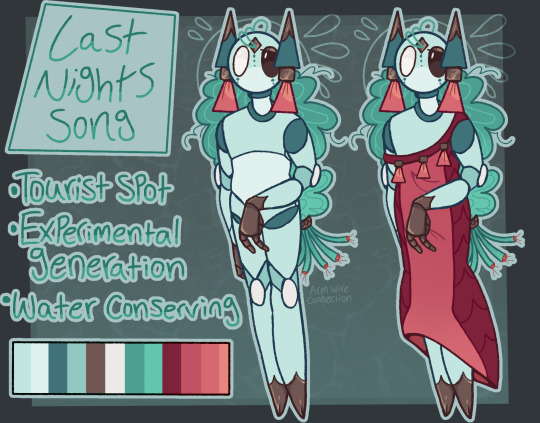
LNS is the iterator for a great lake, the largest of the land and a huge tourist spot. The lake is said to go so deep it reaches the void sea. Due to the concern over water she was made experimentally to be more "eco-friendly", taking half the water, but only because she goes completely dormant in the night cycles. Instead of releasing water vapor which creates rain, it's instead released into the soil which has leeched any nutrients out of it. Current day LNS has infected herself with crescent-neuron disease, an equivalent to sickle-cell which is spreading to all her neuron and degrading her structure/memory, as an attempt to die which went wrong (similar to Rot). No one knows she is suffering from this and trying to break taboo. She's also dating Internal Tempo but just can't stand to continue living as a puppet, especially after his collapse
#rain world#iterator oc#rain world iterator#rain world oc#iterator#rain world downpour#rw iterator#rw oc#rw downpour
30 notes
·
View notes
Text
Hello hello,
This week the gardens starting to look super lovely! There's actually so much to look at I wasn't able to fit every picture in this post, but I'll be sharing more later this week on a few different posts with some things I've done this week towards the goal of being more eco friendly, self concious and getting more from what we have and providing best for my family.
To start the viewing, the sunflowers are starting to bloom :D the tallest is now close to or over 6 ft tall

And lots of lovely bees have been visiting. The girls are very friendly for the most part with respect to their space. They were all loading up on pollen :D 🐝🐝

Also many of the sunflowers have multiple heads, or have many branching smaller heads growing in along many of leaves.
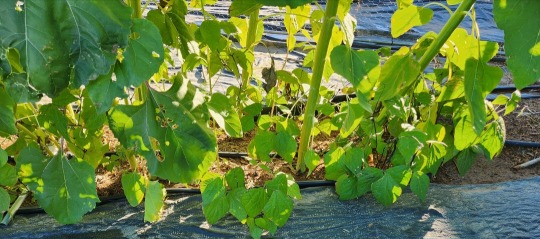
Down below the velour beans are going stronger than I expected in honesty given the sunflower growth and the beans bushing growth. we've gotten 4 harvests now. Each harvest has been around 4-8 ounces.

Nasturtium, I feel okay with starting to harvest the greens soon. Maybe this week or next to make some pesto, breakfast food or salad add ins.

Some of the pumpkin/sunflower+bean row next to the broccoli/nasturtium.
I'm hoping the broccoli will be a little bigger soon so I can harvest some of the leaves for breakfast meals, stirfrys, soup and rice dishes.
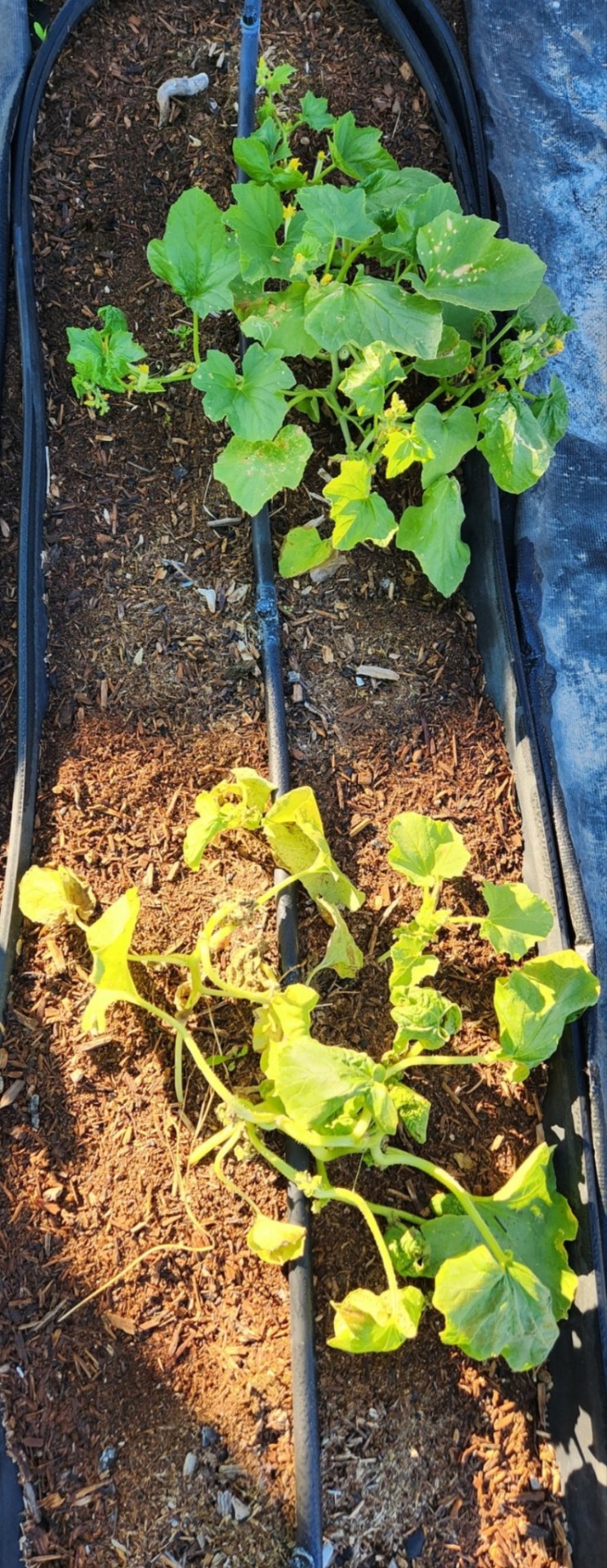
The armenian cucumbers.
Sadly These aren't doing so great, I think where I planted isn't a good winter grow space for them. When I get more soil I'm going to try another spot that has more sun earlier and throughout the day instead of mostly shade. (In the summer/spring they did Great in whichever space.) Once I do I'll be pulling these and planting something else here. Not entirely sure what yet though.
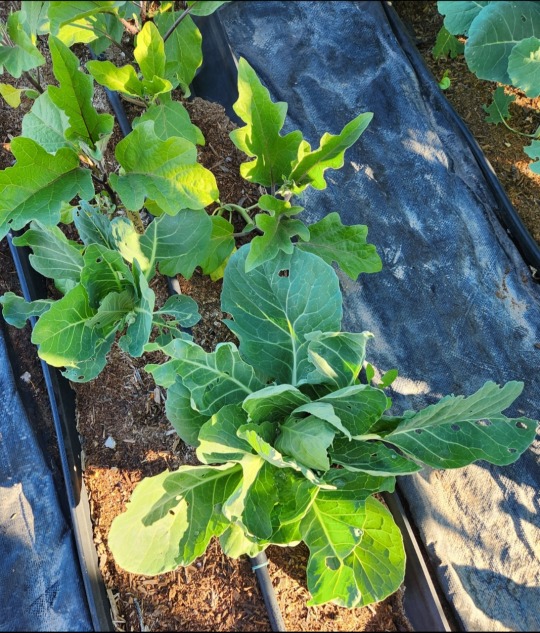
2 cabbages I space filled with. Very excited to see them starting to pick up. 🥬

The eggplants, Very excited there's a full flower now and more flowers look like their coming in!
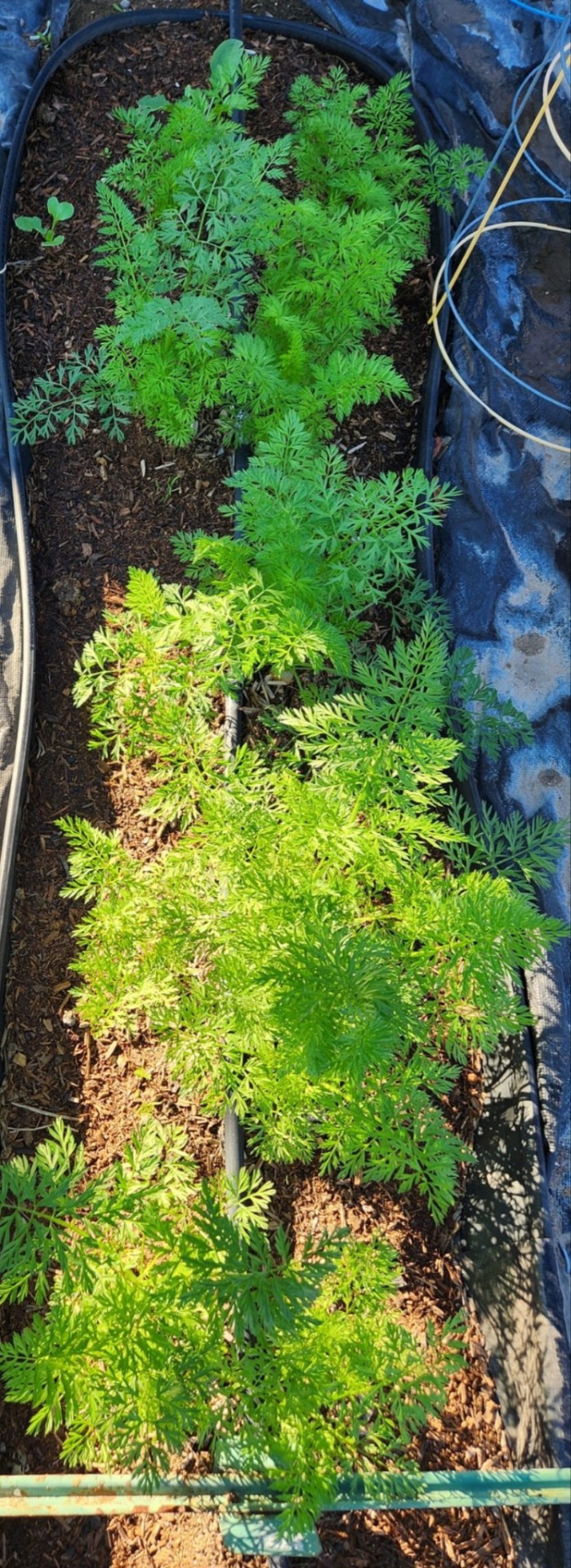
The carrots, a few small radish are still popping up here and there. So I feel like the cornstarch experiment worked but not as well as I'd hoped.
I would use the method again for carrot seeding, but would double the amount of seed in the mix. (I don't mind thinning, the greens and tiny carrots can be used for salad or chopped for omlettes)
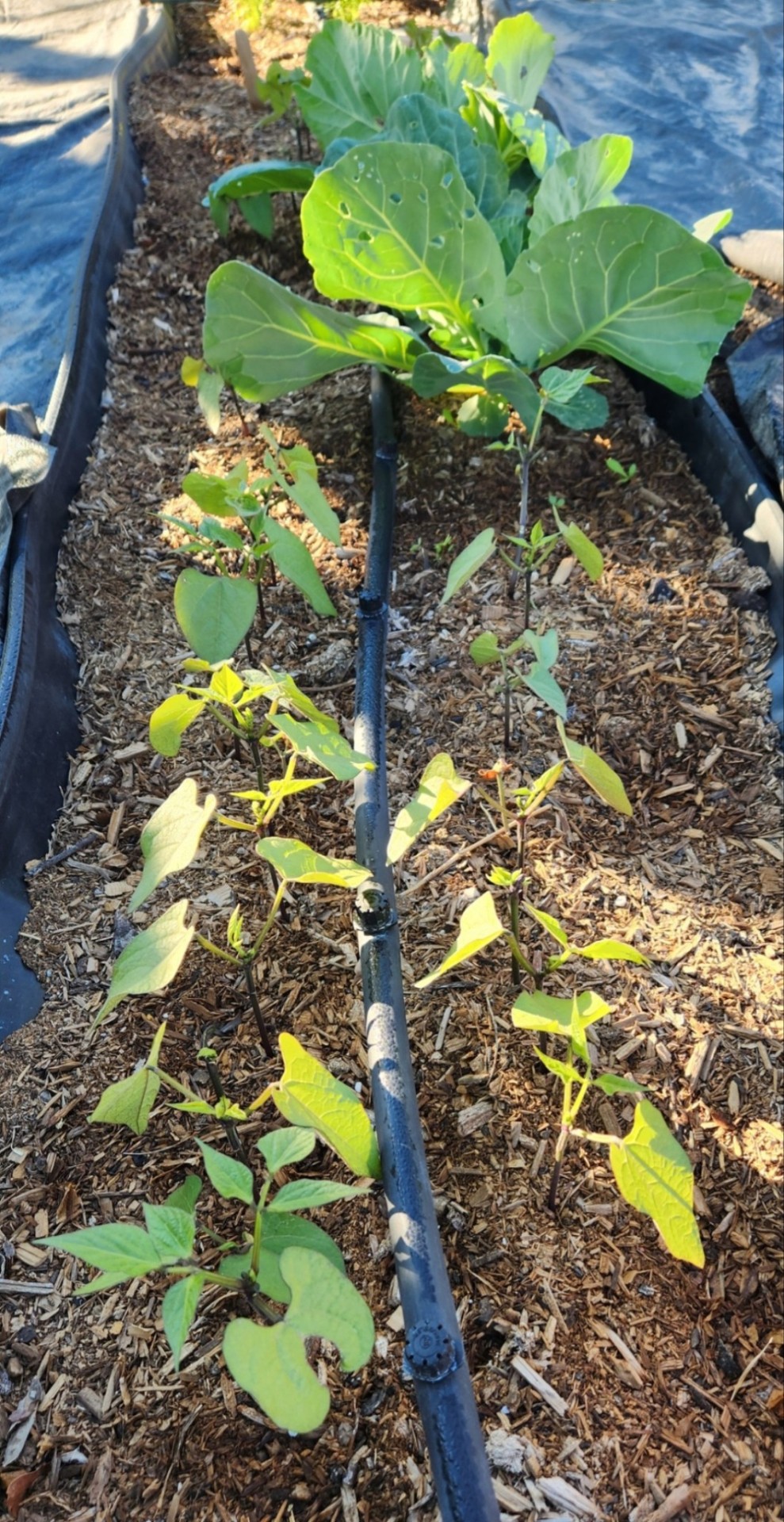
2nd planting (direct seeded) of velour beans, and the few cabbages which survived the initial planting of the row. Somethings having a good munch, ive been checking for the suspects but no luck so far spotting them. I suspect heavily its cabbage loopers as they are a common pest of the area. (I am making chamomile tea to spray on them for now to test if it works.) next grow I may intercrop cabbage and sunflowers or borage. Or perhaps have some movable chamomile pots At the end of the beds to deter them.
This week I'm hoping to get some garden supplies for a few projects And to start breaking down some pallets to build some raised garden beds for a garden expansion.
I am late on starting my tomato and pepper seeds (mostly because I haven't sat down to figure what varieties we want to eat) but a late start is better than none. Thankfully the weather here allows for some tardiness with outdoor grows.
That's it for now 🌱
🌱🌻Happy Homesteading and Gardening🌻🌱
12 5 2023
#homesteading#self sufficient living#thestudentfarmer#studentfarmer#self sufficiency#food#garden#gardening#low waste#broccoli#cabbage#variety bush bean#carrot#nasturtium#sunflower#pumpkin#urban homesteading#urban gardening#urban farming#smalls scale differences#urban sustainability#human right to clean food#right to grow food#food is a human right#right to grow#small scale farming#going green as can be#frugal#ecofriendly#prevent food waste
17 notes
·
View notes